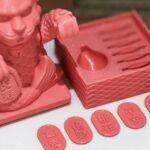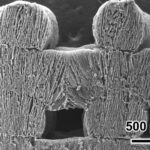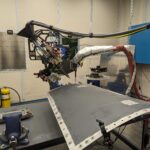Among the many marvels happening in modern medical research is the addition of additive technologies. Doctors have been particularly keen on developing orthopaedic solutions. Why orthopaedics in particular? Because printing and restoring bones, sinew or bone-like materials is now possible. While 3D printers have been commonplace in surgical research, 3D bio pens are a new milestone.
Australia’s ARC Centre of Excellence for Electromaterials Science is reporting that the 3D printing pens can successfully repair bones afflicted with osteoarthritis. While in this case the test subjects were sheep, human trials may not be that far off. The results have been promising during the multiple tests conducted on osteoarthritic animals.
During surgeries, the surgeon wields the pen like they would a scalpel. The biopen secretes a bioink with cells inside it into the cavities of the bones repairing them. The ink protects the cells during the operation and helps them integrate into the joints.
Peter Choong from St Vincent’s Hospital was the orthopaedic surgeon who created the original pen. The final concept was retooled by Centre of Excellence. Since the researchers derived the cells from the patient, the body is not likely to reject them. This means that there is no need for immunosuppressive drugs.
3D Biopens
Researchers have been using 3D pens for bioprinting for quite some time. The same team of Australian researchers experimented with stem cell printing. The experiment entailed using the 3D pen to fill in wounded areas with stem cells. This allowed the researchers to implant functional cells that could integrate into the bodily structure with precise detail.
The implications for the research into these tools are immense. They could easily function as very manoeuvrable surgical instruments. The other advantage is that they can integrate the patient’s biology into their own processes.
The whole study is available for purchase here.











